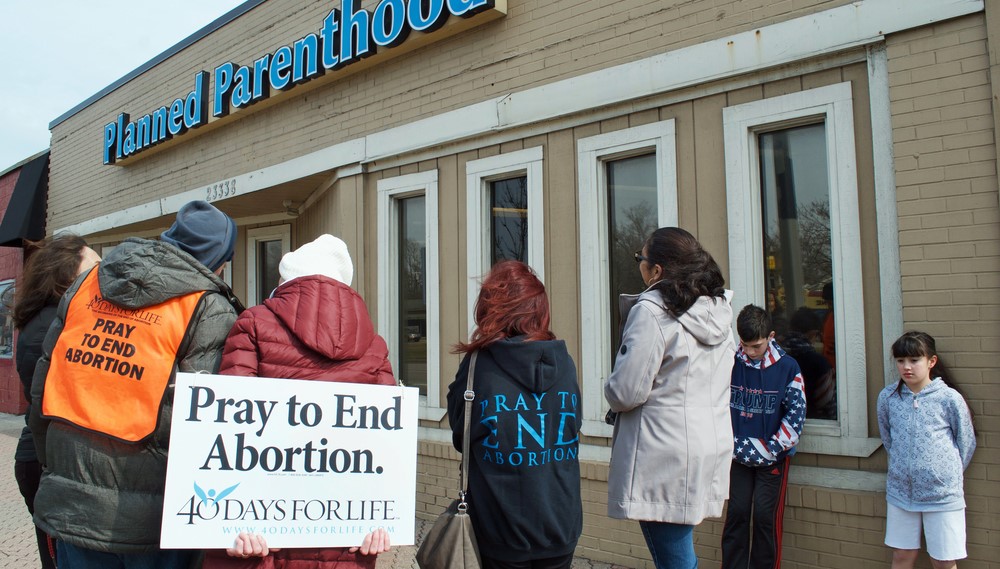
Emily Ottley, Lecturer in Law at the University of Winchester, has been giving evidence to the Health, Social Care and Sport Committee as part of the Scottish Parliament’s scrutiny of the Abortion Services (Safe Access Zones) (Scotland) Bill. If passed the bill could create safe access zones around all places providing abortion services in Scotland. Here Emily explains her research…
I was commissioned by the Committee to undertake research on comparable legislation, and I examined the law in 24 jurisdictions as part of this project. Safe access zone legislation creates, or provides for the creation of, a protective area around premises where abortion services are provided. Such legislation is typically passed in response to concern about current or future protest in the vicinity of premises where abortion services are provided, and a desire to ensure good access to those services.
In other research published in the Medical Law Review, I have suggested that the location of these protests reflects a desire to affect both the decisions of individual clinic-users to have abortions and the decisions of clinic-staff to provide, or facilitate the provision of, abortions – rather than to oppose abortion law or policy in any effective way.
Provision for safe access zones around premises where abortion services are provided was recently made in England and Wales through the Public Order Act 2023. However, safe access zones do not yet exist in practice because the relevant section of the Act has not been brought into force by the Home Secretary. Elsewhere in the United Kingdom, provision for safe access zones around premises where abortion services are provided also became law in Northern Ireland in 2023.
I found that the details of the provisions contained within safe access zone legislation varied between jurisdictions, particularly with regard to: the method for the creation of the protective areas; the size of the protective areas; the behaviour that is prohibited within the protective areas; and the penalties for breaching the law. Indeed, there are some points of distinction between the English and Welsh law and the Scottish Bill (as introduced). The Scottish safe access zones would be larger (200 metres), for example, and they could be extended or reduced by the relevant Minister. Safe access zones in England are 150 metres as standard, with no scope for extension or reduction.
I also found that the most significant challenge encountered both during and after the passage of safe access zone legislation in all jurisdictions has been achieving a satisfactory balance between the rights of those who wish to protest at premises where abortion services are provided and clinic-users/staff. It is necessary to strike an appropriate balance in order for states to comply with their human rights and/or constitutional obligations. Committee members were particularly interested in this during the evidence session.
The challenge is clear from the Parliamentary debates, where those who opposed safe access zone legislation for “going too far” and others struggled to frame the Bills in such a way to strike an appropriate balance. The challenge is also clear from a number of legal challenges in Northern Ireland, Canada, Australia, and the USA brought by protesters who claimed that safe access zone legislation violated their rights and the rights of other protesters. Most of these legal challenges have been unsuccessful, including the challenge to the Northern Irish legislation.
The Supreme Court of the United Kingdom (UKSC) acknowledged that making it an offence to do an act within a safe access zone with the intention of, or being reckless as to whether it has the effect of, influencing a protect person interferes with protesters' rights to: freedom of thought, conscience and religion; freedom of expression; and freedom of assembly (under Articles 9, 10 and 11 of the European Convention on Human Rights). However, the UKSC ultimately concluded that this interference was proportionate, and so the legislation was compatible with the Convention. I have written in more detail about this case in Medical Law International.
Committee members were also interested the approach of other jurisdictions to “silent prayer”. I explained that this had been a difficult issue elsewhere, including in England and Wales where draft non-statutory guidance seemed to create an exemption for silent prayer – despite an amendment seeking to do exactly that having been rejected by the House of Commons on 7 March 2023.
In New Zealand, the Attorney General for New Zealand expressly noted that an individual engaging in silent prayer would not be criminalised under the revised draft Bill there, because such an act could not properly be regarded as “engaging in protest”. However, I also noted that research by Lowe and Hayes had shown that the harassment women feel stems from the presence of protesters at premises where abortion services are provided. The witnesses with lived experience who gave evidence directly after me confirmed that this was the case for them.
Further evidence sessions will be held by the Committee over the next four weeks as part of the first stage of Parliamentary scrutiny of the Bill. A recording of my contribution to the first evidence session is available to view here, and my full report can be accessed here.
Back to media centre